#Leo Lentelli
Text

Foundry Workers Melt Down Charlottesville’s Robert E. Lee Statue
Eventually, an artist will be chosen to transform the bronze bars into a public art installation
The controversial bronze statue of Confederate General Robert E. Lee that stood for nearly a century in Charlottesville, Virginia, has been melted down so that it may someday be transformed into a public art installation.
On Saturday, at a foundry in an undisclosed location in the American South, workers cut the infamous figure into small pieces, then fed those pieces into a 2,250-degree furnace. They poured the metal into molds for ingots, or rectangular bars, imprinted with the words “Swords Into Plowshares.” That’s the name of the project that will transform the divisive monument into a new piece of public art.

Only a small group of people, including a handful of journalists, was allowed to watch the melting. They were invited on the condition that they didn’t disclose the name or location of the foundry—or the identities of its workers—over fears of retaliation.
“The risk is being targeted by people of hate, having my business damaged, having threats to family and friends,” says the foundry’s owner, a Black man, to the Washington Post’s Teo Armus and Hadley Green.
Even so, the man added, “When you are approached with such an honor, especially to destroy hate, you have to do it.”
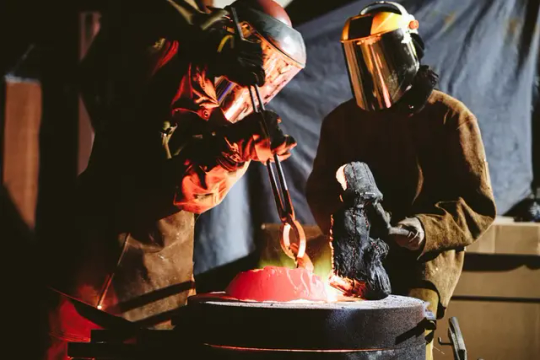
One particularly poignant moment occurred when foundry workers removed the statue’s face from the rest of the head.
“A man in heat-resistant attire pulled down his gold-plated visor, turned on his plasma torch and sliced into the face of Robert E. Lee,” writes Erin Thompson, an art historian at the John Jay College of Criminal Justice and author of Smashing Statues: The Rise and Fall of America’s Public Monuments, in a guest essay for the New York Times. “The hollow bronze head glowed green and purple as the flame burned through layers of patina and wax. Drops of molten red metal cascaded to the ground.”
The 21-foot-tall statue’s journey to this point was a long and complicated one. Commissioned in 1917 and installed in 1924, it loomed over a downtown Charlottesville park for decades.
In 2017, amid a broader national debate over Confederate monuments, white supremacists gathered in Charlottesville to protest the statue’s removal. During the “Unite the Right” rally, a man drove his car into a group of counter-protesters, killing 32-year-old Heather Heyer and injuring many others.
After years of legal battles, the statue finally came down in July 2021. The city donated it to the Jefferson School African American Heritage Center, which has been responsible for it ever since and leads the Swords Into Plowshares project.
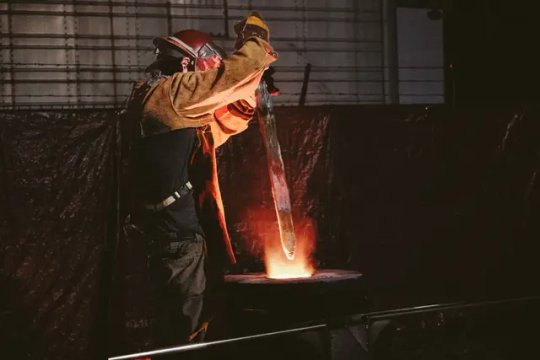

Organizers had wanted to melt down the statue sooner, but they waited until a judge dismissed a lawsuit against the plan.
Because of the statue’s size, the melting process will take weeks. Once that work is finished, project organizers will move on to the next phase of their plan: choosing an artist who will transform the metal into something new.
“Humpty Dumpty couldn’t be put back together again,” said Reverend Isaac Collins, a Methodist minister in Charlottesville who spoke at the melting ceremony, per NPR’s Debbie Elliott. “We still have a lot of work to do, but this statue that has cost us so much, so much violence, so much hurt, so much bloodshed—it’s gone. And it’s never going to be put back together the way it was.”
By Sarah Kuta.
#Foundry Workers Melt Down Charlottesville’s Robert E. Lee Statue#robert e lee#Henry Shrady#Leo Lentelli#Walter Blair#unite the right#confederacy#hate#racism#sculpture#bronze sculpture#art#artist#art work#art world#art news
13 notes
·
View notes
Text
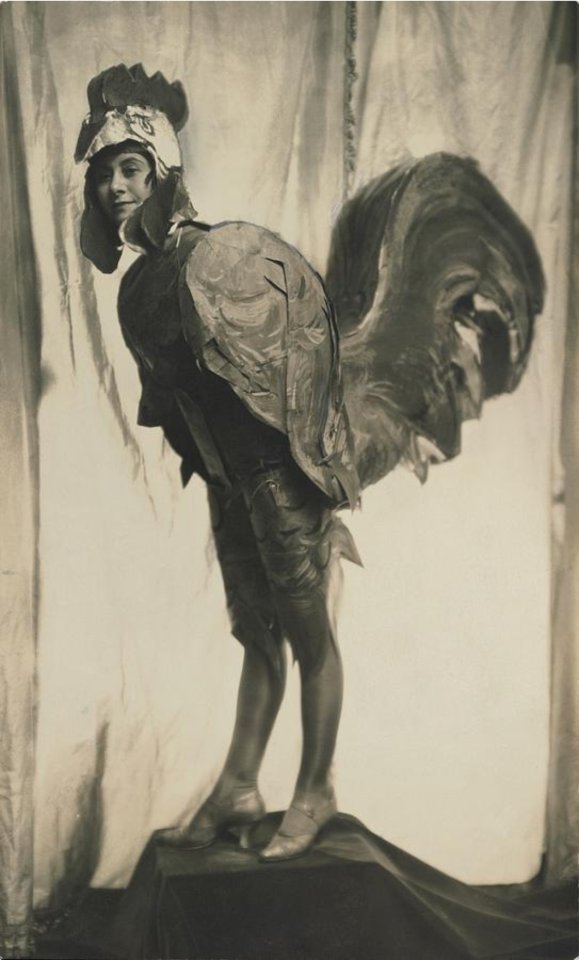
Edward J. Steichen :: Mrs. Leo Lentelli wearing a Chanticleer costume designed by Italian-American sculptor Leo Lentelli. Published in Vogue, April 1st, 1924. | src Condé Nast
View on WordPress
#Edward Steichen#chanticleer costume#chicken#costume#costume design#vogue magazine#full length portrait#1920s#Edward J. Steichen#Eduard Jean Steichen#leo lentelli#portrait#Porträt#retrato#ritratto#portret#retrat#Bildnis#studio portrait#hauntedbystorytelling
94 notes
·
View notes
Photo

Leo Lentelli (1879-1961), 'Final Figure', ''The Story of the Exposition'' by Frank Morton Todd, Vol. 1, 1921
Source
#leo lentelli#italian artists#italian sculptor#sculptures#court of abundance#The Story of the Exposition#frank morton todd#vintage art
376 notes
·
View notes
Photo



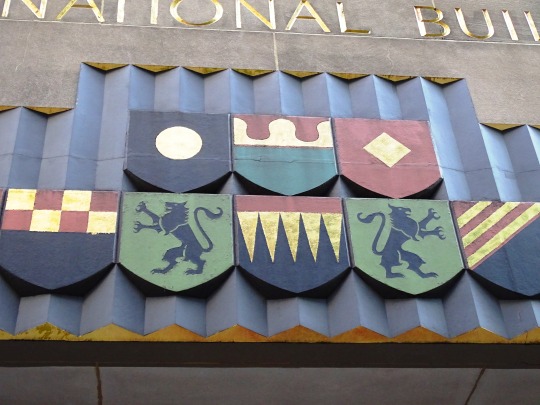



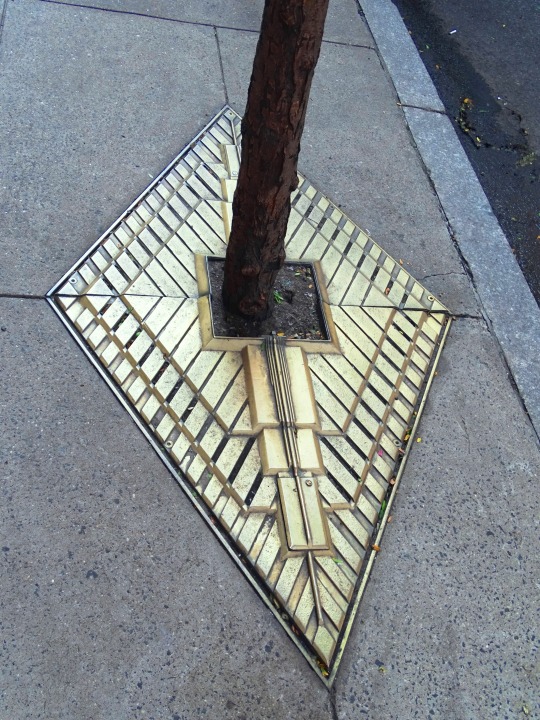
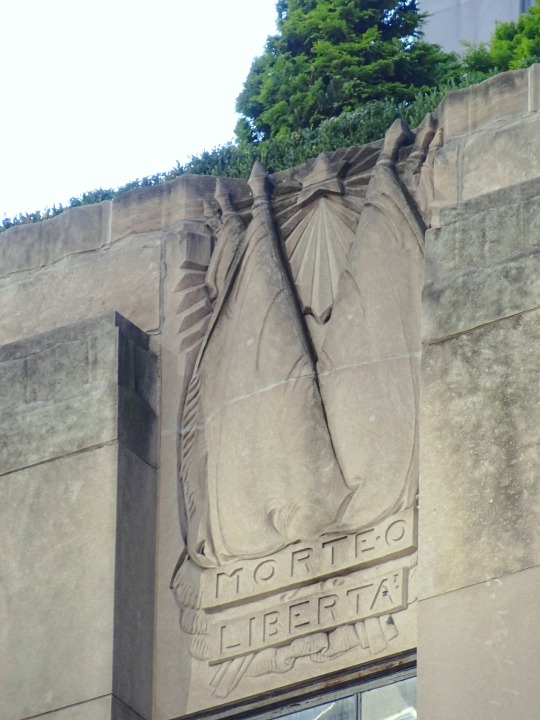

Rockefeller Center, Manhattan (No. 3)
The International Building, also known by its addresses 630 Fifth Avenue and 45 Rockefeller Plaza, is a 512-foot (156 m), 41-story building located on the west side of Fifth Avenue between 50th and 51st Streets in Midtown Manhattan, New York City. Completed in 1935, the tower is part of Rockefeller Center, and was built in the Art Deco style. The International Building is set back from Fifth Avenue, with a plaza in front of the main entrance. Two retail wings, the Palazzo d'Italia and International Building North, surround the plaza to the south and north, respectively. The building contains several works of art as part of its design, including the Atlas statue in the plaza.
The 512-foot (156 m) International Building has the address 630 Fifth Avenue to its east, or 45 Rockefeller Plaza to its west. The tower stands at 41 stories high, including mechanical floors. It was recessed as far back from Fifth Avenue as possible so as to maximize rental space while still complying with the 1916 Zoning Resolution, which mandated that buildings of a certain height needed architectural recessions depending on how far the building's wall was from the street. One of two skyscrapers that opened in Manhattan in 1935, it was noted for its short 136-day duration of construction, as well as the construction quality, overall design, and materials used.
The building, located in the middle of the block between Rockefeller Plaza and Fifth Avenue, contains a central plaza on its east, facing the Fifth Avenue entrance. The Fifth Avenue entrance leads to the four-story-high lobby. There are three glass-and-nickel bronze revolving doors underneath a sign that spells "FIFTH AVENUE" in nickel bronze capital letters. Three-story-high windows, surrounded by marble, are located above the doors. These windows can be used to hold exhibitions.
The International Building's lobby was inspired by the triangular-shaped lobby of the Chrysler Building and the chapel-like lobby of the Empire State Building. As the International Building was not as big as 30 Rockefeller Plaza, the tower's architects designed the lobby so that it created an illusion of grandeur. The lobby is bedecked with "rich, elegant materials", including veined green marble stretching the entire height of the wall; nickel bronze moldings at the top of the green marble columns, and copper leaf on the ceiling. Elevators ascend to an upper mezzanine and descend to the complex's underground mall, highlighting movement. These escalators also have nickel bronze gilding. Three-story-high hallways stretch to the north and south of the lobby, leading to Palazzo d'Italia and International Building North. The mezzanine also has green marble walls, as well as corridors to the north and south leading to the annexes.
The passenger elevators are placed in a central core, ringed by a rectangular corridor on each floor. The ground level has a similar footprint to the office levels above it, except that the ground level contains stores instead of office space. The lobby contains large windows that were originally intended for exhibitions, but no showrooms were ever installed. Marble piers, topped with nickel bronze moldings, surround the green-marble walls of the elevator bank.
Offices surround the corridors on each of the levels above the mezzanine. The complex's original architect, Raymond Hood, ensured that all of the offices in the entire complex be a maximum of 27 feet (8.2 m) from a window since that was the maximum distance that sunlight could permeate the windows of a building at New York City's latitude.
Palazzo d'Italia and International Building North serve as wings of the International Building. Their one-story side entrances complement the grand shaft and entrance of the main tower.
The more southerly of the two wings is Palazzo d'Italia (literally the Italian Palace) at 626 Fifth Avenue. The limestone-clad building contains retail space on the first floor, separated from the offices above it by an exterior cornice, as well as setbacks on the sixth floor. It is attached to the International Building at its northwest corner. The Italian leader Benito Mussolini was impressed by the building's original 9-story height, which beat the 6-story height of the French and British Buildings, although the two new wings were later scaled down to six stories as well.
The International Building North, at 636 Fifth Avenue, is the identical twin of Palazzo d'Italia and the more northerly of the main building's two wings, being attached to the main building at its southwest corner. The International Building North, like its twin, contains a rooftop garden, a first-floor cornice, and a sixth-floor setback. The building also contains a themed rooftop garden on the eastern half of the roof.
Source: Wikipedia
#Youth Leading Industry by Attilio Piccirilli#New York City#USA#Rockefeller Center#Art Deco#Midtown Manhattan#summer 2018#original photography#Raymond Hood#relief#International Building#travel#Four Periods In Italian History by Leo Lentelli#façade#landmark#vacation#tourist attraction#Cornucopia of Plenty by Lee Lawrie#Leon V. Solon#architecture#cityscape
3 notes
·
View notes
Photo
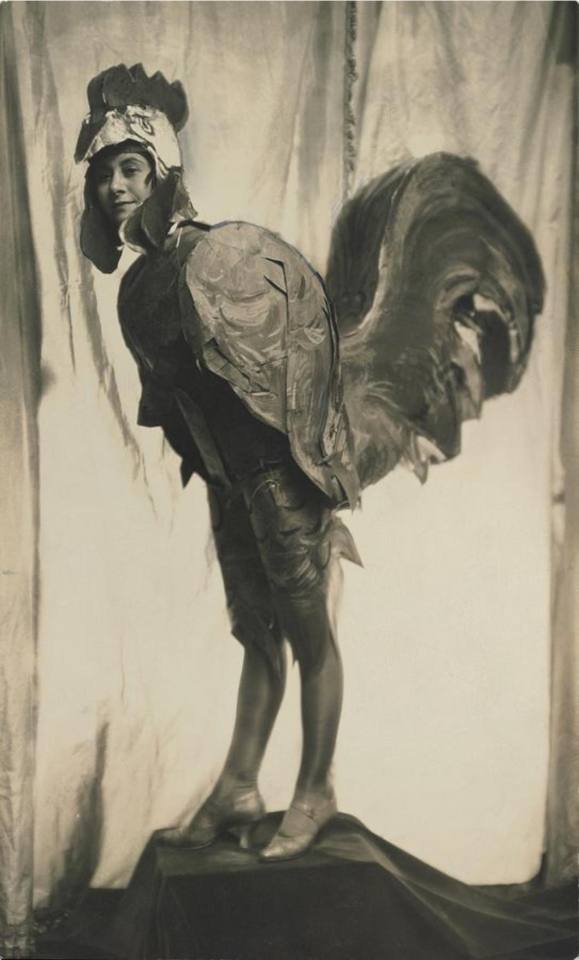
Edward J. Steichen :: Mrs. Leo Lentelli wearing a Chanticleer costume designed by Italian-American sculptor Leo Lentelli. Published in Vogue, April 1st, 1924.
52 notes
·
View notes
Photo

Times Square with the Leo Lentelli statue 'Purity (Defeat of Slander)', New York City, 1910 [ 3147 x 4340] Check this blog!
3 notes
·
View notes
Photo

Times Square with the Leo Lentelli statue 'Purity (Defeat of Slander)', New York City, 1910 [ 3147 x 4340] via /r/HistoryPorn http://bit.ly/2V5ql4Y
0 notes
Text
Shaping History: Monument-Toppling, Racial Justice and the Law
Shaping History: Monument-Toppling, Racial Justice and the Law
By Madhulika Murali.
Two years after the 2017 “Unite the Right” white supremacist rally in Charlottesville, including the terror killing of counter-protestor Heather Heyer, the culprit confederate statues of Robert E. Lee (Henry Shrady and Leo Lentelli, 1924) and Thomas “Stonewall” Jackson (Charles Keck, 1921) (the “Statues”) have been allowed to stay in situ. A judgment issuedin September…
View On WordPress
0 notes
Text
AP Explains: How Robert E. Lee went from hero to racist icon | Robert E Lee
Members of the group Americans for Richmond Monument Preservation have requested a permit to hold an event in September at the Robert E. Lee Monument in Richmond according to state officials.
As the general in chief of the Confederate armies, Robert E Lee led the secessionist states of America to defeat in the civil war in 1865.
Sculptor Leo Lentelli had used parts of the general's uniform to achieve the right proportions, with the statute listed as a National Historic Landmark.
Charlottesville, a city of 50,000 about a two-hour drive from Washington, became a target for white supremacists this spring when the local council voted to remove a statue of Confederate General Robert E. Lee from a downtown park.
FILE- In this Friday file photo, workers prepare to take down the statue of former Confederate Gen.
The Confederate statue of Robert E. Lee is in the background.
Robert E. Lee was vilified during the Civil War only to become a heroic symbol of the South's "Lost Cause" " and eventually a racist icon.James Muwakkil leads the NAACP chapter in Lee County, which is named for Confederate Gen.
These preppy fascists were said to have congregated on the University of Virginia campus to protest the removal of a statue of Robert E. Lee, but really, most of these whiny brats couldn't tell you the first thing about the Confederate general.
A Confederate Heritage Organization has asked Virginia for permission to hold a rally in September at the Robert E. Lee monument in Richmond.
A day after a violent and deadly outbreak at a "Unite the Right" rally in Charlottesville, Virginia, some unidentified Austinites damaged four street signs in south Austin that honor a Confederate general.A statue in Lee's honour was erected in Charlottesville in 1924.
The chapter's 2015 efforts to change Lee's portrait in county commission chambers were unsuccessful.
0 notes
Text
Hyperallergic: The Story Behind Charlottesville’s Robert E. Lee Monument
The statue of Robert E. Lee in Emancipation Park in Charlottesville, Virginia (photo by Cville dog, via Wikimedia Commons)
The impetus for this weekend’s violent and deadly rallies of white supremacists and neo-Nazis in Charlottesville, Virginia, was a piece of public art. Specifically, an equestrian statue of Confederate general Robert E. Lee that is slated for removal. In February, Charlottesville’s city council voted to take down the statue, though in early May a judge issued a six-month injunction to stop its removal after a coalition of historians and Confederate supporters filed an appeal. For now, the 14-foot-tall bronze sculpture still sits atop its granite pedestal in Emancipation Park — whose renaming from Lee Park in June was not without incident, either — its fate as yet undecided.
The campaign to relocate Charlottesville’s Lee statue is part of a nationwide movement to critically examine and recontextualize public artworks that pay tribute to or otherwise elevate white supremacy, chief among them monuments to the Confederacy. New Orleans has removed four of its most prominent, with plans to display them in a setting that offers more historical context for the events and men they commemorate. In June, after much legal wrangling, St. Louis’s Confederate Monument was dismantled. Just yesterday, the mayor of Louisville, Kentucky, announced plans to review the city’s public art holdings to identify any works that might “be interpreted to be honoring bigotry, racism and/or slavery.”
Like many of the Confederate monuments dotting the South, Charlottesville’s statue of Lee was made in the North. It was designed by New York sculptor Henry Shrady — who is most famous, ironically, for co-designing the monument to Lee’s opponent in the Civil War, Ulysses S. Grant, at the US Capitol in Washington, DC — and, after his death in 1922, completed by the Italian-American artist Leo Lentelli.
The #UnitetheRight group surrounds the Robert E. Lee statue that is at the center of this debacle #Charlottesville http://pic.twitter.com/YbNiRk7eaf
— Erica Corder (@EricaCorder) August 12, 2017
According to nomination documents filed with the National Register of Historic Places in 1996 (the Lee monument was listed in 1997), the first artist approached to create the monument was Daniel Chester French, but because he was unavailable he recommended Shrady for the job. When Shrady died five years after taking on the commission (and just two weeks before his Grant Monument was inaugurated), Lentelli took on the project. However, by the time he gained access to the late sculptor’s studio, his clay model for the statue was badly damaged and cracked. It would be another two years before the monument was unveiled.
The Lee Monument was commissioned by Paul Goodloe McIntire, a businessman and philanthropist born in Charlottesville who financed several other prominent statues in the city, as well as supporting the University of Virginia — whose McIntire Department of Art is name after him, and to whose Fralin Museum of Art he donated hundreds of works. He also created Lee Park itself, buying the parcel of land it occupies in 1917 and clearing it to create a landscaped space for the planned monument. The statue of Lee atop his horse, Traveller, was cast by Brooklyn-based company Roman Bronze Works, while its pink granite pedestal (designed by Virginia architect Walter Dabney Blair) was fabricated in Washington, DC.
Detail of Charlottesville’s Robert E. Lee Monument (photo by Carptrash, via Wikimedia Commons)
The finished Lee Monument, a full 26 feet tall with its pedestal, was inaugurated on May 21, 1924, “during a gala Confederate reunion,” according to its National Register of Historic Places application. For the dedication gala, the monument was draped in a large Confederate flag that was pulled away by the three-year-old great-granddaughter of General Lee, Mary Walker Lee, to great cheers, after which the president of the University of Virginia, Edwin A. Alderman, made an acceptance speech on behalf of the city.
“Thus the Robert Edward Lee Sculpture remains undisturbed in its original location,” Betsey Gohdes-Baten wrote in the closing lines of the Lee Monument’s National Register of Historic Places application. “Sentiment in Charlottesville will undoubtedly keep it there, for the monument is a unique memorial to the most eminent Confederate hero of all.” Today, sentiment toward the monument — excepting the views of the white nationalists, neo-Nazis, and Ku Klux Klan members who’ve recently descended on Charlottesville — clearly does not favor keeping it in its original location.
The post The Story Behind Charlottesville’s Robert E. Lee Monument appeared first on Hyperallergic.
from Hyperallergic http://ift.tt/2uDzDIt
via IFTTT
0 notes
Photo
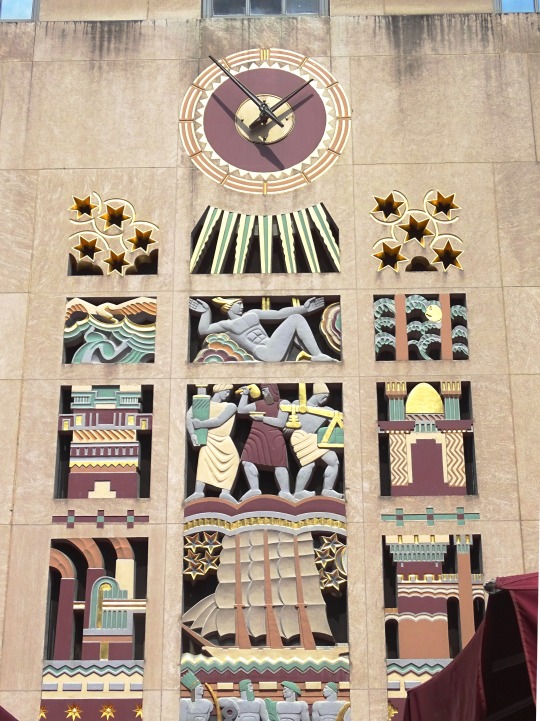
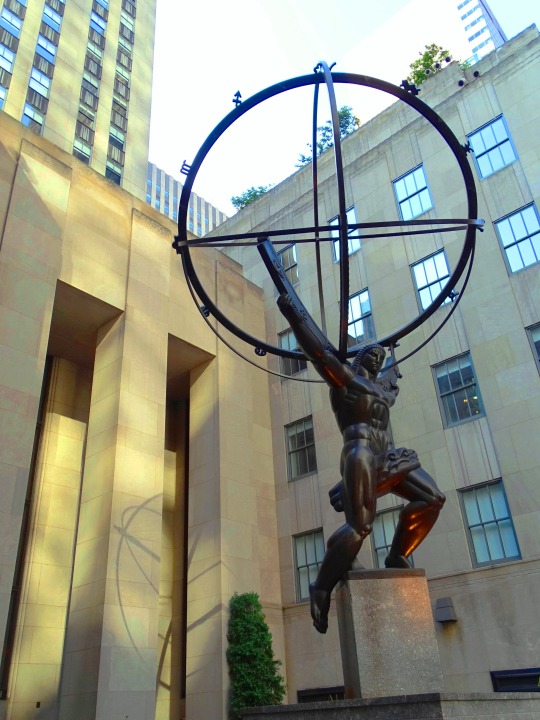








Art on the Rockefeller Center, Manhattan
In November 1931, John Todd suggested the creation of a program for placing distinctive artworks within each of the buildings. Hartley Burr Alexander, a noted mythology and symbology professor, was tasked with planning the complex's arts installations. Alexander submitted his plan for the site's artwork in December 1932. As part of the proposal, the complex would have a variety of sculptures, statues, murals, friezes, decorative fountains, and mosaics. In an expansion of Hood's setback-garden plan, Alexander's proposal also included rooftop gardens atop all the buildings, which would create a "Babylonian garden" when viewed from above.
At first, Alexander suggested "Homo Fabor, Man the Builder" as the complex's overarching theme, representing satisfaction with one's occupation rather than with the wage. However, that theme was not particularly well received by the architects, so Alexander proposed another theme, the "New Frontiers"; this theme dealt with social and scientific innovations and represented the challenges that humanity faced "after the conquest of the physical world". In theory, this was considered a fitting theme, but Alexander had been so specific about the details of the necessary artworks that it limited the creative license for any artists who would be commissioned for such works, so he was fired. It took several tries to agree on the current theme, "The March of Civilization", at which point some of the art had already been commissioned, including those which Alexander had proposed.
The art that currently exists within Rockefeller Center was inspired by Professor Alexander's arts program. Sculptor Lee Lawrie contributed the largest number of individual pieces – twelve, including the Atlas statue facing Fifth Avenue and the conspicuous friezes of Wisdom above the main entrance to 30 Rockefeller Plaza. Edward Trumbull coordinated the colors of the works located inside the buildings, and Léon-Victor Solon did the same job for the exterior pieces. Isamu Noguchi's gleaming stainless steel bas-relief, News, over the main entrance to 50 Rockefeller Plaza (the Associated Press Building) was, at the time of commissioning, the largest metal bas-relief in the world. The complex's other sculptors included Rene Chambellan, Leo Friedlander, Robert Garrison, Alfred Janniot, Carl Paul Jennewein, Gaston Lachaise, Leo Lentelli, Paul Manship, Giacomo Manzù, Hildreth Meiere, and Attilio Piccirilli. Other artists included Carl Milles, Margaret Bourke-White, and Dean Cornwell. Radio City Music Hall architect Donald Deskey commissioned many Depression-era artists to design works for the interior of the hall, including Stuart Davis's 1932 mural Men Without Women, named after the short story collection by Ernest Hemingway that had been published the same year. One of the center's more controversial works was Man at the Crossroads, created by Diego Rivera, which was originally commissioned for 30 Rockefeller Plaza's lobby but was demolished before it could be completed.
Source: Wikipedia
#ARMS OF ENGLAND by Lee Lawrie#Leon V. Solon#Rockefeller Center#USA#SAINT FRANCIS OF ASSISI WITH BIRDS#Art Deco#relief#exterior#travel#Raymond Hood#SWORDS INTO PLOWSHARES#architecture#cityscape#COLUMBIA GREETING A WOMAN AND BOATMAN UNFURLING A SAIL#clock#THE STORY OF MANKIND#façade#summer 2020#Midtown Manhattan#New York City#Light#Wisdom#Sound#Rene Paul Chambellan#Atlas#2018#Youth Leading Industry by Attilio Piccirilli
715 notes
·
View notes
Photo


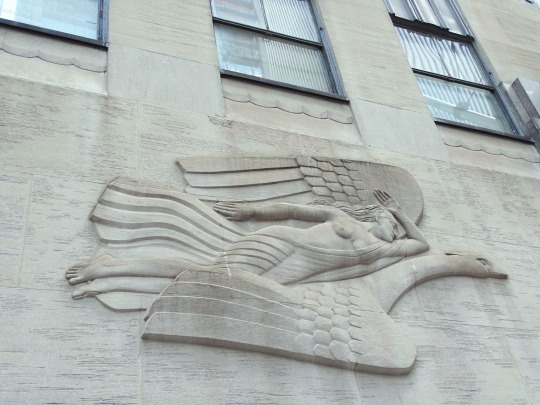




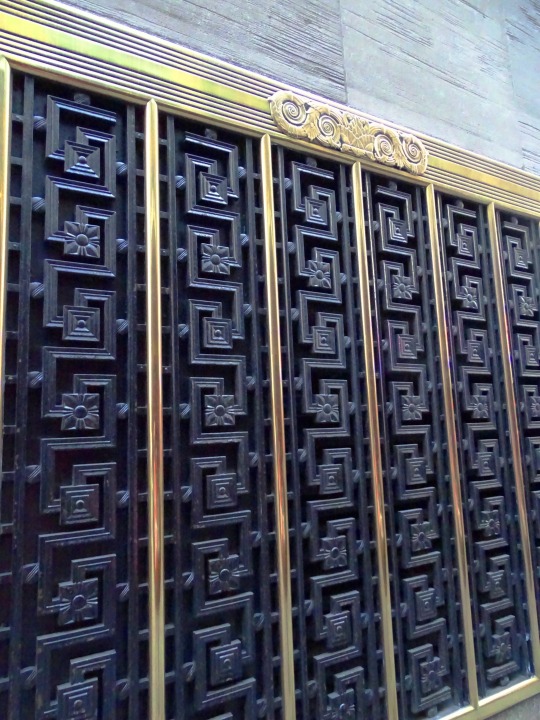
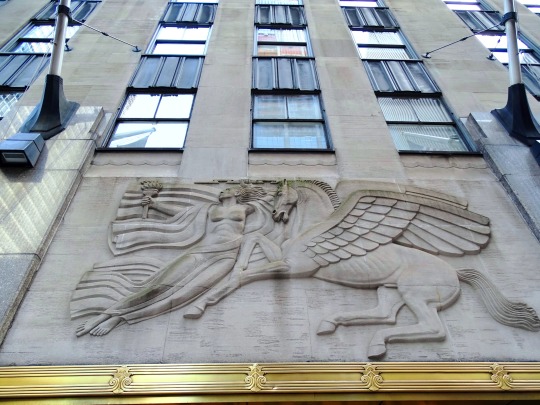
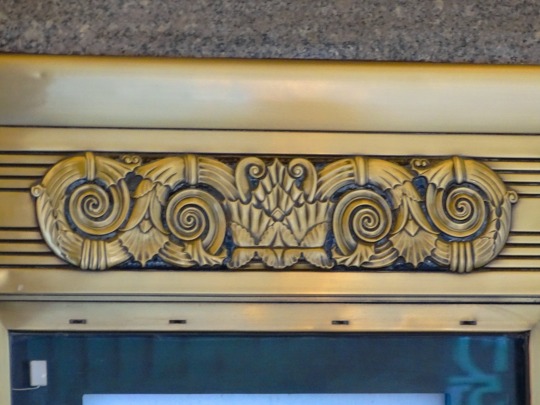
Rockefeller Center, Manhattan (No. 4)
In November 1931, John Todd suggested the creation of a program for placing distinctive artworks within each of the buildings.Hartley Burr Alexander, a noted mythology and symbology professor, was tasked with planning the complex's arts installations. Alexander submitted his plan for the site's artwork in December 1932. As part of the proposal, the complex would have a variety of sculptures, statues, murals, friezes, decorative fountains, and mosaics.In an expansion of Hood's setback-garden plan, Alexander's proposal also included rooftop gardens atop all the buildings, which would create a "Babylonian garden" when viewed from above.
At first, Alexander suggested "Homo Fabor, Man the Builder" as the complex's overarching theme, representing satisfaction with one's occupation rather than with the wage. However, that theme was not particularly well received by the architects, so Alexander proposed another theme, the "New Frontiers"; this theme dealt with social and scientific innovations and represented the challenges that humanity faced "after the conquest of the physical world". In theory, this was considered a fitting theme, but Alexander had been so specific about the details of the necessary artworks that it limited the creative license for any artists who would be commissioned for such works, so he was fired. It took several tries to agree on the current theme, "The March of Civilization", at which point some of the art had already been commissioned, including those which Alexander had proposed.
The art that currently exists within Rockefeller Center was inspired by Professor Alexander's arts program. Sculptor Lee Lawrie contributed the largest number of individual pieces – twelve, including the Atlas statue facing Fifth Avenue and the conspicuous friezes of Wisdom above the main entrance to 30 Rockefeller Plaza. Edward Trumbull coordinated the colors of the works located inside the buildings, and Léon-Victor Solon did the same job for the exterior pieces. Isamu Noguchi's gleaming stainless steel bas-relief, News, over the main entrance to 50 Rockefeller Plaza (the Associated Press Building) was, at the time of commissioning, the largest metal bas-relief in the world. The complex's other sculptors included Rene Chambellan, Leo Friedlander, Robert Garrison, Alfred Janniot, Carl Paul Jennewein, Gaston Lachaise, Leo Lentelli, Paul Manship, Giacomo Manzù, Hildreth Meiere, and Attilio Piccirilli. Other artists included Carl Milles, Margaret Bourke-White, and Dean Cornwell. Radio City Music Hall architect Donald Deskey commissioned many Depression-era artists to design works for the interior of the hall, including Stuart Davis's 1932 mural Men Without Women, named after the short story collection by Ernest Hemingway that had been published the same year. One of the center's more controversial works was Man at the Crossroads, created by Diego Rivera, which was originally commissioned for 30 Rockefeller Plaza's lobby but was demolished before it could be completed.
Source: Wikipedia
#News by Isamu Noguchi#Rockefeller Center#Midtown Manhattan#USA#travel#New York City#summer 2018#Art Deco#architecture#cityscape#original photography#Morning of Morning Present Evening by Robert Garrison#Radio City Music Hall#façade#vacation#landmark#tourist attraction#Donald Deskey#Subway sign#MTA#exterior#building ornament
3 notes
·
View notes
Photo

Times Square with the Leo Lentelli statue 'Purity (Defeat of Slander)', New York City, 1910 [ 3147 x 4340] #HistoryPorn http://bit.ly/2V5ql4Y
0 notes
Text
AP Explains: How Robert E. Lee went from hero to racist icon | Robert E Lee
Robert E. Lee was vilified during the Civil War only to become a heroic symbol of the South's "Lost Cause" " and eventually a racist icon.
The men hold white shields with a black-and-white logo of two axes.
Robert E. Lee, which stands over 100 feet tall, in Lee Circle in New Orleans.
The Confederate statue of Robert E. Lee is in the background.
A statue in Lee's honour was erected in Charlottesville in 1924.
A Confederate Heritage Organization has asked Virginia for permission to hold a rally in September at the Robert E. Lee monument in Richmond.
As the general in chief of the Confederate armies, Robert E Lee led the secessionist states of America to defeat in the civil war in 1865.Charlottesville, a city of 50,000 about a two-hour drive from Washington, became a target for white supremacists this spring when the local council voted to remove a statue of Confederate General Robert E. Lee from a downtown park.
James Muwakkil leads the NAACP chapter in Lee County, which is named for Confederate Gen.
The chapter's 2015 efforts to change Lee's portrait in county commission chambers were unsuccessful.
As the general in chief of the Confederate armies, Robert E Lee led the secessionist states of America to defeat in the civil war in 1865.FILE- In this Friday file photo, workers prepare to take down the statue of former Confederate Gen.
These preppy fascists were said to have congregated on the University of Virginia campus to protest the removal of a statue of Robert E. Lee, but really, most of these whiny brats couldn't tell you the first thing about the Confederate general.
0 notes